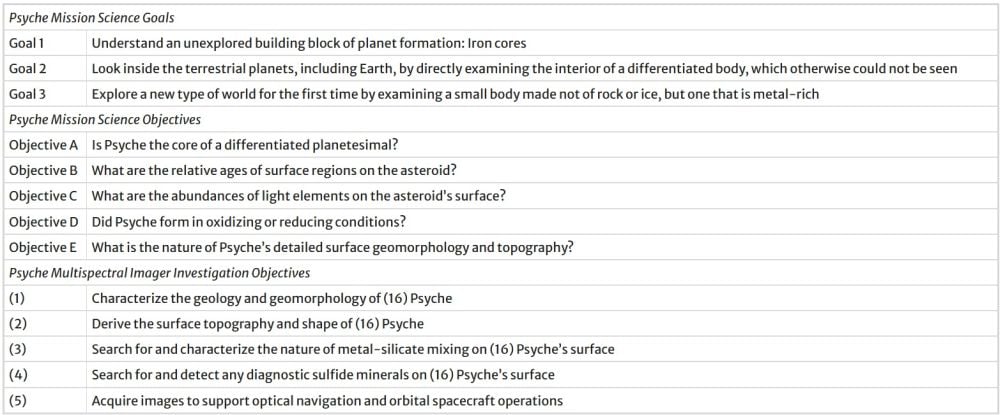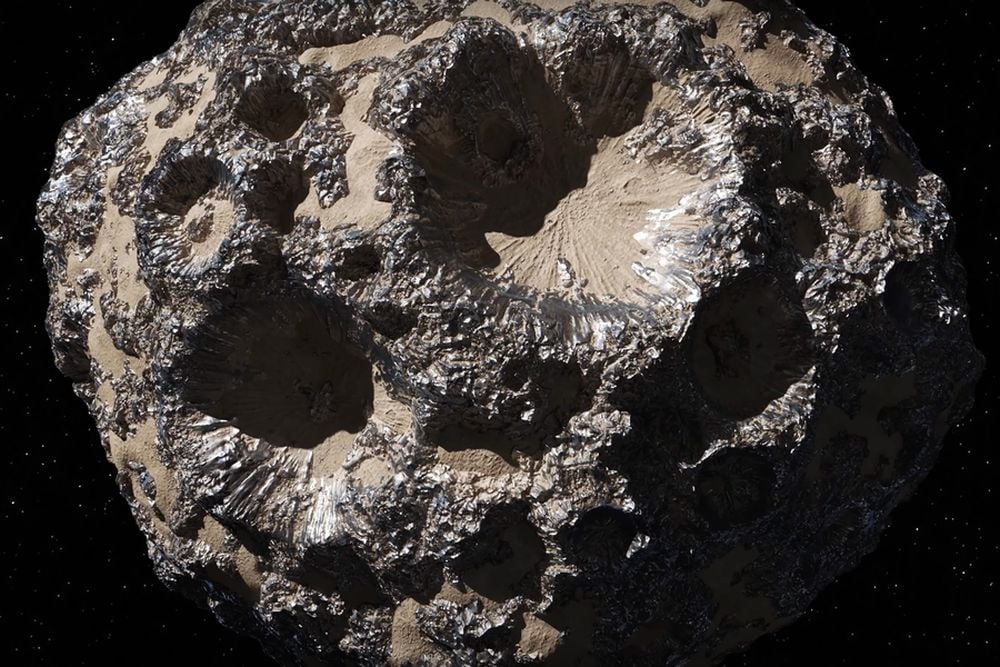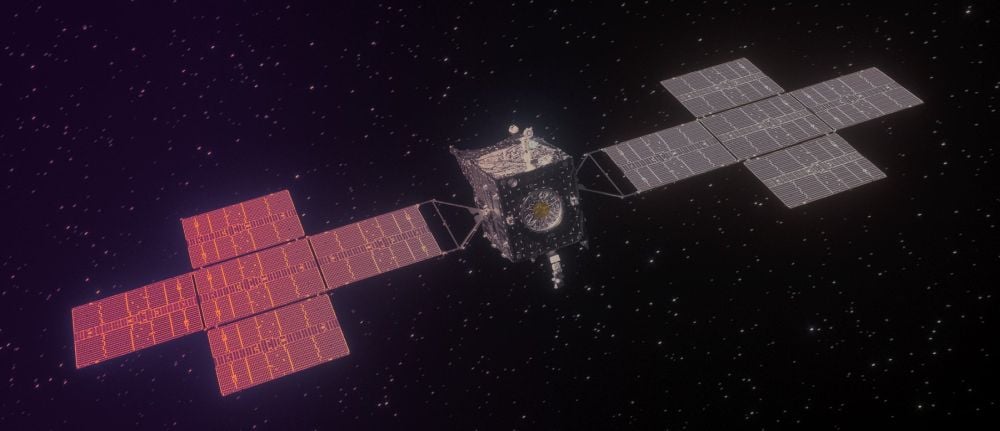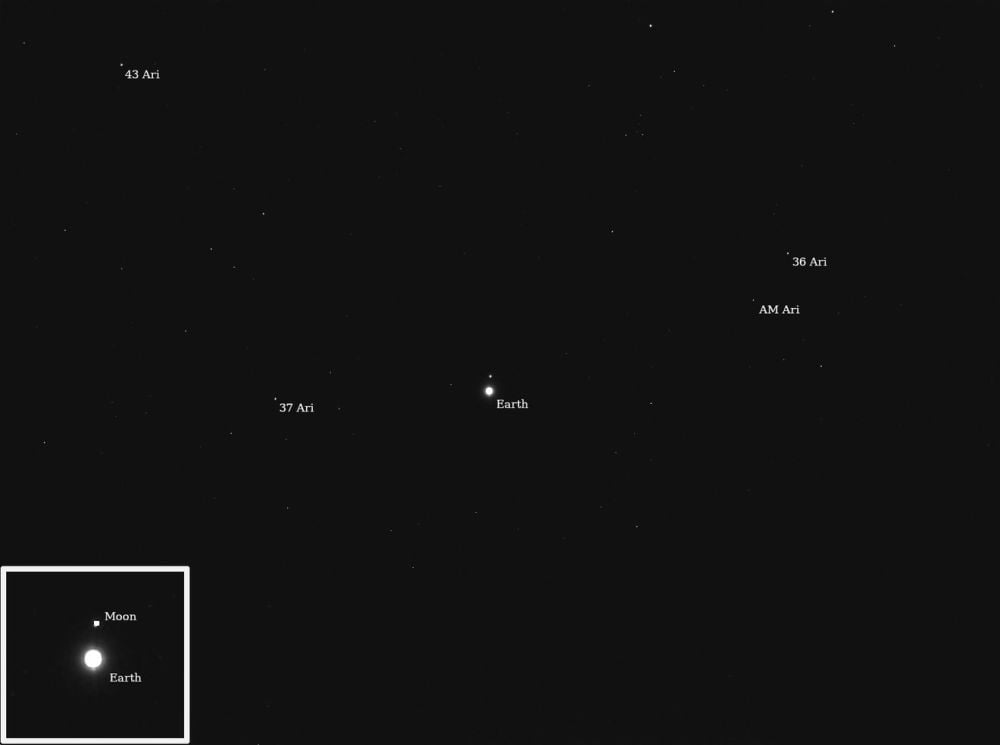NASA’s Psyche Mission launched in October 2023 to rendezvous with the asteroid of the same name. The Psyche asteroid is a metal-rich asteroid that could be the remnant core of a planetesimal that had its outer layers stripped away. It’s due to reach the asteroid and begin orbiting it in 2029.
Spacecraft like Psyche have important preparatory tasks to complete on their way to their targets. Mission staff periodically test and calibrate cameras and science instruments en route, and Earth makes a great target. There’s a bit of a tradition emerging, where spacecraft capture images of Earth from great distances. The Cassini-Huygens mission captured images of Earth on its way to Saturn, and Voyager 1 captured its famous “Pale Blue Dot” image on its way out of the outer Solar System.
Cassini captured this image of Earth from a great distance, thought not to test its cameras and instruments. It’s a composite of 323 images. Image Credit: By NASA/JPL/SSI/CICLOPS – http://www.jpl.nasa.gov/spaceimages/details.php?id=PIA17171, http://photojournal.jpl.nasa.gov/catalog/PIA17171, Public Domain, https://commons.wikimedia.org/w/index.php?curid=27393467
NASA recently instructed their asteroid-visiting Psyche spacecraft to glance homeward as one of their periodic tests. They wanted to test how the twin cameras respond to the type of reflected sunlight that they’ll be working with at Psyche. The cameras captured the inset image and the wider context image with 10-second exposures on July 20th and 23rd. At that time, about 290 million kilometers separated the spacecraft and Earth.
NASA also likes to test Psyche’s Multispectral Imager on targets with spectra similar to the asteroid Psyche. This allows them to compare Psyche’s images with images of the objects from other telescopes or spacecraft and to calibrate Psyche’s performance. Earlier in its mission, Psyche captured images of Jupiter and Mars, both redder than Earth, to check the spacecraft’s performance.
Psyche’s science instruments include magnetometers, a Gamma-Ray and Neutron Spectrometer, and the Multispectral Imager (MI). The MI is designed to gather geologic data, topographic data, and compositional data from the asteroid. The data will be used to paint an overall picture of the asteroid and its history. It’ll help researchers understand the impacts, tectonics, and other processes that shaped the asteroid’s surface. When combined with data from the other instruments, it’ll help scientists determine if Psyche is actually a remnant planetesimal core as it hypothesized to be. Calibrating Psyche’s instruments with other targets will strengthen its observations of the asteroid.
 This table sums up the Multispectral Imager’s job at asteroid Psyche. Image Credit: J.F. Bell III et al. 2025. https://doi.org/10.1007/s11214-025-01169-3
This table sums up the Multispectral Imager’s job at asteroid Psyche. Image Credit: J.F. Bell III et al. 2025. https://doi.org/10.1007/s11214-025-01169-3
Psyche could be a survivor of multiple impacts and collisions that stripped away its outer layers, leaving only a metal-rich core behind. So studying it is an opportunity to observe a planetary core directly. It could answer all kinds of questions about how Earth and other rocky bodies formed.
In a 2022 paper, researchers used ALMA data to model and map Psyche’s surface. They found that it was heterogeneous, meaning it is diverse. They also found that it was in line with a collisional remnant. They wrote that their findings “could be explained by a thin mantle of fine regolith, fractured bedrock, and/or implanted silicate-rich materials covering an otherwise metal-rich surface. All these scenarios are indicative of a collisionally evolved world.”
 Astronomers from MIT and other institutions used ALMA data to map Psyche’s surface and came up with this image. We’ll have to wait several years before we see the real thing in this much detail. The Psyche spacecraft’s closest orbit will bring it to within 75 km of the asteroid. Image Credit: NASA
Astronomers from MIT and other institutions used ALMA data to map Psyche’s surface and came up with this image. We’ll have to wait several years before we see the real thing in this much detail. The Psyche spacecraft’s closest orbit will bring it to within 75 km of the asteroid. Image Credit: NASA
These test images of Earth and the Moon won’t be the final ones. There’s still four years of cruising before Psyche reaches Psyche. More images from other Solar System bodies will help fine tune and calibrate the spacecraft’s imagers.
“After this, we may look at Saturn or Vesta to help us continue to test the imagers,” said Jim Bell, the Psyche imager instrument lead at Arizona State University in Tempe. “We’re sort of collecting solar system ‘trading cards’ from these different bodies and running them through our calibration pipeline to make sure we’re getting the right answers.”
 An artist’s illustration of the Psyche spacecraft. Image Credit: NASA/JPL
An artist’s illustration of the Psyche spacecraft. Image Credit: NASA/JPL
Psyche also tested its magnetometer and gamma-ray and neutron spectrometer in July, something they do every six months. Those tests are also important, though they don’t produce any images for general appreciation.
“We are up and running, and everything is working well,” said Bob Mase, the mission’s project manager at NASA’s Jet Propulsion Laboratory in Southern California. “We’re on target to fly by Mars in May 2026, and we are accomplishing all of our planned activities for cruise.”
